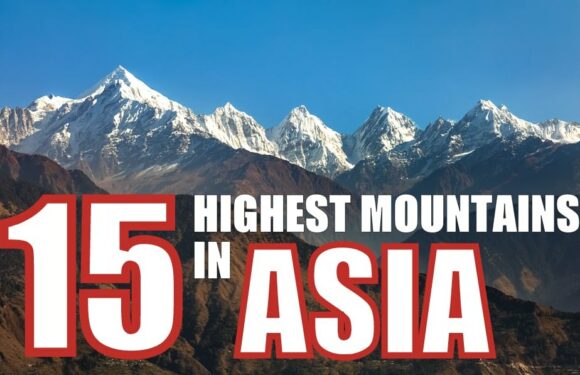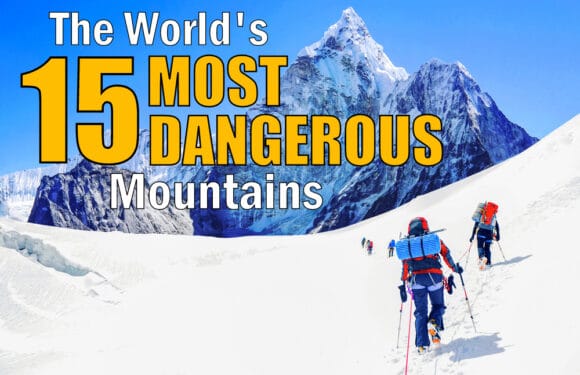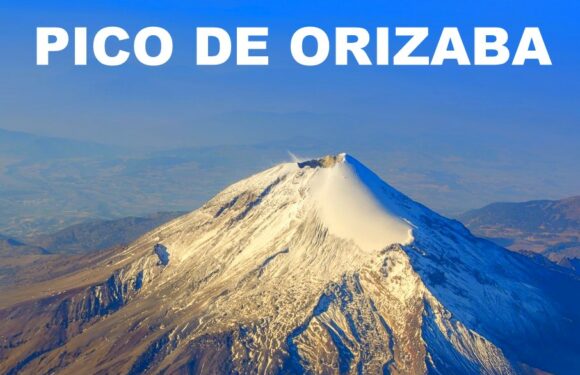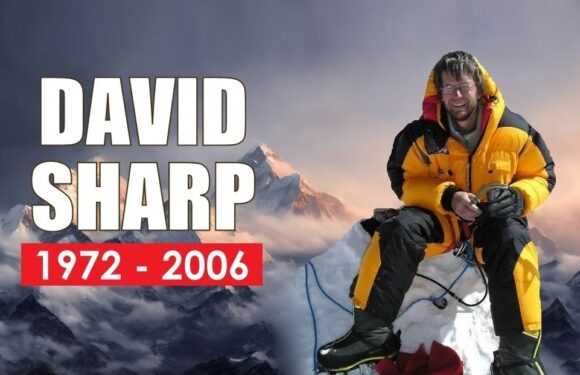
Where is Matterhorn Located?
Matterhorn is located on the border between Switzerland and Italy in the Pennine Alps. This mountain towers over the Swiss town of Zermatt and the Italian town of Breuil-Cervinia. It’s distinctive pyramid shape makes it one of the most recognizable peaks in the world. It’s also one of the most photographed mountains globally, symbolizing the beauty and challenge of the Alpine region.

How Tall is Matterhorn?
Matterhorn stands 14,692 feet (4,478 meters) tall. It is the 6th highest peak in the Alps (Mont Blanc is the tallest). Its height and sharp silhouette have made it a symbol of the Swiss Alps and one of the most iconic mountains not only in Europe, but on Earth.
How Was it Formed?
Matterhorn was formed millions of years ago through the tectonic collision between the African and Eurasian plates. This monumental geological event, occurring between 90 and 20 million years ago, caused the Earth’s crust to buckle and rise, forming the Pennine Alps and the Matterhorn.

The Matterhorn’s distinct silhouette was sculpted by the erosive forces of glaciers. The freeze-thaw cycles that break down rock carved out cirques around the summit, forming what is known as a “glacial horn” due to its sharply pointed shape. Interestingly, the peak is composed mainly of gneiss rock, believed to have originated from the African plate.
How Long Does it Take to Climb?
Climbing Matterhorn typically takes 2 days. Most climbers spend the first day reaching a high-altitude hut, such as the Hörnli Hut on the Swiss side or the Rifugio Carrel on the Italian side. The summit push begins early the next morning, with climbers aiming to reach the peak and return to the hut by late afternoon. The actual time can vary based on the climber’s experience, weather conditions, and the route.
How Hard is it to Climb Matterhorn?
Matterhorn is known as the most difficult classic peak in the Alps. It requires a low to moderate level of technical climbing skill, but high physical fitness. The ascent involves scrambling over of Grade 2 or 3 terrain on exposed ridges, often in mixed conditions of rock and ice.

Climbing the Matterhorn is highly demanding due to the need for a quick pace, continuous ascent, and high altitude. Climbers typically spend 9 to 12 hours on the roundtrip, with only occasional breaks. Sure-footedness, or the ability to scramble over rock, ice, or snow while remaining agile and stable, is crucial. While the hike itself isn’t technically difficult, it is dangerous as falling is a real threat. Climbers must be prepared for sudden changes in weather, which can turn an already hard climb into a deadly endeavor.
What is the Success Rate?
The success rate for Matterhorn is estimated at 70–80% for guided climbers. Proper preparation, acclimatization, and favorable weather conditions are factors that contribute to a successful ascent. Many climbers fail due to poor weather, lack of fitness, or insufficient technical skills. Those who succeed often credit their success to thorough preparation, physical conditioning, and the guidance of experienced mountain guides.

How Dangerous is it to Climb the Matterhorn?
The Matterhorn is considered to be one of the world’s most dangerous mountains. Since the first ascent in 1865, over 500 people have died while climbing or descending the Matterhorn. In modern times, the mountain sees an average of 12 fatalities per year. The high death rate is due to a combination of steep and exposed climbing sections, sudden storms, and rockfall.
Rockfall is particularly hazardous, especially in warm weather when the ice holding rocks in place melts. There have been some discussions about closing the mountain due to safety concerns.
Can Beginners Climb the Matterhorn?
No. Matterhorn is not suitable for beginners.
Climbers should have extensive experience in alpine mountaineering, including technical rock and ice climbing skills. Many guide companies require clients to complete training climbs on less demanding peaks before attempting the Matterhorn. These preparatory climbs help build the necessary skills and acclimatization for the more challenging conditions on the Matterhorn.

Here are some standards that you should meet before attempting to climb Matterhorn:
- Be able to climb at a pace of 1,200 feet (366 meters) per hour
- Be able to move in exposed terrain for 8–10 hours with breaks
- Have experience in rock climbing and ice climbing
- Have experience using crampons and scrambling
Who Was the First Person to Climb the Matterhorn?
The first successful ascent of the Matterhorn was achieved on July 14, 1865, by a team led by British climber Edward Whymper. The climb was a historic achievement but ended in tragedy when four members of the team fell to their deaths during the descent. This dramatic event brought international attention to the Matterhorn. Whymper’s account of the ascent and the subsequent tragedy is detailed in his book “Scrambles Amongst the Alps.”
How Many People Climb Per Year?

Approximately 3,000 climbers climb Matterhorn each year, with up to 150 people climbing per day during the peak season. This is a busy, crowded mountain.
How Do You Train to Climb the Matterhorn?
Climbing Matterhorn requires a combination of rock, snow, and ice skills, alongside endurance and robust cardiovascular conditioning. Therefore, training for the Matterhorn should include preparation in technical climbing and physical endurance.

Regular exercise routines, such as running or gym workouts, are not sufficient on their own. Pure strength or cardiovascular fitness doesn’t encompass the specific conditioning needed for such a climb. Climbers should focus on improving their rock climbing skills, especially on steep and exposed terrain. Practice climbs on similar but less demanding peaks are highly recommended.
What is the Best Time to Climb the Matterhorn?
The best time to climb the Matterhorn is during the summer months, from mid-July to mid-September. During this period, the weather is generally more stable, and the routes are less likely to be covered in snow and ice. Winter ascents are possible but significantly more difficult and dangerous due to harsher weather conditions and increased avalanche risk.
How Many Climbing Routes Are on the Matterhorn?

The Matterhorn has several climbing routes:
Hörnli Ridge (Swiss Route)
The Hörnli Ridge is the most frequented route to the summit.
The journey begins in Zermatt, where climbers take a cable car to Schwarzsee. From there, a 2-3 hour hike leads to the Hörnli Hut, situated at 10,696 feet (3,258 meters). The hut offers basic accommodations, including dormitory-style sleeping arrangements and meals. Climbers typically spend the night here to acclimatize.
Summit day starts around 4 AM. The initial part of the climb involves scrambling over rocks, with the use of fixed ropes in some sections. Climbers reach the Solvay Hut, an emergency shelter at 13,133 feet (4,003 meters), after 3-4 hours. From here, the route becomes steeper and more exposed, requiring careful navigation and secure footing. The final section involves climbing the fixed ropes on the upper ridge, leading to the summit. The descent follows the same route.
The ascent to the summit typically takes 5-7 hours and the return to Hörnli Hut takes 4-6 hours. After a brief rest, they continue the descent to Schwarzsee and return to Zermatt.

Lion Ridge (Italian Route)
The Lion Ridge, or Italian Route, is a more technically demanding alternative to the Hörnli Ridge.
The climb begins in Breuil-Cervinia, where climbers take a cable car to Plan Maison. From there, a 4-5 hour hike leads to Rifugio Carrel, located at 12,556 feet (3,827 meters). This hut provides basic accommodations and is often used as a base for acclimatization.
Summit day begins around 3 AM. The route involves steep rock climbing sections and exposed ridges. One of the key features is the Jordan Ladder, a fixed ladder that helps climbers ascend a particularly challenging section. The climb continues over the Pic Tyndall and along narrow ridges leading to the summit. The descent follows the same route.
The ascent typically takes 6-8 hours, while the return to Rifugio Carrel takes 5-7 hours. After a rest, climbers continue the descent to Breuil-Cervinia.

Zmutt Ridge
The Zmutt Ridge is a less frequented and more challenging route, known for its technical difficulty and stunning scenery. This route requires advanced climbing skills.
Climbers start in Zermatt and hike to the Schönbiel Hut, located at 8,432 feet (2,570 meters). This hike takes 4-5 hours and serves as an initial acclimatization phase. From the hut, climbers continue to the base of the Zmutt Ridge, which involves crossing glaciers and navigating through crevassed terrain. This part of the climb takes 3-4 hours.
Summit day starts around 2 AM. The route involves complex route finding, steep rock and ice sections, and significant exposure. Climbers must navigate through narrow ridges and overcome technical obstacles. The ascent to the summit takes 8-10 hours. The descent follows the Hörnli Ridge route, which takes 5-7 hours, followed by a further descent to Zermatt.

North Face
The North Face of the Matterhorn is one of the most challenging and dangerous routes. This route requires expert climbing skills and experience in high-altitude mountaineering. The North Face is often subject to avalanches and rockfall, making it a serious undertaking only for the most experienced climbers.
Climbers typically start in Zermatt and make their way to the base camp at the foot of the North Face. This involves a combination of hiking and glacier travel, taking 4-5 hours.
Summit day begins around midnight to allow enough time for the climb and descent. The route involves steep ice climbing, navigating through seracs and crevasses, and dealing with potential rockfall and avalanches. The ascent can take 12-16 hours, depending on conditions. The descent follows the Hörnli Ridge route down to Hörnli Hut, taking 5-7 hours, then continuing to Zermatt.
How Much Does it Cost to Climb Matterhorn?

The cost to climb the Matterhorn typically ranges from $2,000 to $5,000 USD. This price can vary based on several factors, including the guiding company, the route, and the services included in the package.
Guiding fees alone range from $1,500 to $3,000 USD. Climbers usually spend nights in high-altitude huts like the Hörnli Hut or Rifugio Carrel. The cost of staying in these huts varies, generally ranging from $50 to $150 USD per night, including meals.
How Does One Travel to the Matterhorn?
International travelers usually fly into Zurich or Geneva, the closest major airports to the Matterhorn. From Zurich or Geneva, travelers take a train to Zermatt, a picturesque, car-free alpine village that serves as the primary base for Matterhorn expeditions. The Swiss train system is efficient and scenic, with the journey from Zurich taking about 3.5 hours and from Geneva about 4 hours. Train tickets cost approximately $100 to $150 USD for a round trip.

Zermatt offers a wide range of accommodations, from budget hostels to luxury hotels. Additionally, the town is well-equipped with services for climbers, including equipment rental shops, guiding companies, and outdoor gear stores. Climbers can rent or purchase any necessary equipment they don’t already have. Finally, Zermatt offers various restaurants, cafes, and grocery stores where climbers can prepare for their ascent or relax after their climb.
How Does Mount Kilimanjaro Compare to Matterhorn?
While both peaks are bucket-list destinations, they differ significantly in terms of technical difficulty, physical demands, and overall experience.
First, the Matterhorn is substantially shorter than Kilimanjaro. Matterhorn is 14,692 feet (4,478 meters) tall versus Kilimanjaro’s 19,341 feet (5,895 meters). However, climbing Matterhorn is a much more technical and requires mountaineering experience. The ascent involves rock climbing, exposed ridges, and traversing mixed terrain of rock and ice. So, climbers should be proficient in the use of crampons, ice axes, and ropes.

The climb is physically grueling, requiring excellent endurance and upper body strength. Summit day typically involves 9 to 12 hours of continuous climbing, with minimal breaks. Climbers need to be in top physical condition, capable of handling steep ascents and descents, and must possess strong cardiovascular and muscular endurance.
Kilimanjaro, in contrast, is a non-technical trekking peak. The climb involves long hikes on established trails. While physically demanding due to the altitude and distance, Kilimanjaro does not require technical climbing skills or equipment. The fitness required for Kilimanjaro is focused more on endurance rather than technical prowess.





























































